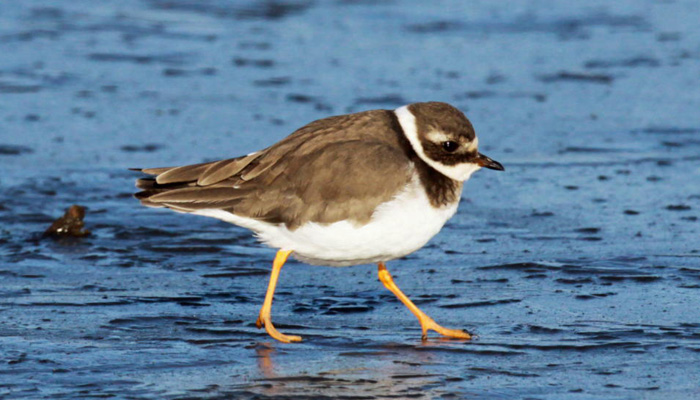
English:
Common Ringed Plover, Ringed Plover
Russian: Галстучник
Mongolian:
Хүзүүвчит
хиазат
German: Sandregenpfeifer
French: Grand gravelot
Japanese: ハジロコチドリ (Hajiro-kochidori)
Body length: 17-19cm
Wing span: 35-41 cm
Breeds
on open shores by sea or likes, preferring gravelly or sandy patches among
short grass; also above treeline on fells and tundra. Outside breeding season
fairly common on inland water margins, estuaries and tidal flats; may form
sizable groups on migration and in winter. Food is wide variety of freshwater
and marine invertebrates. Nest is scrape on sand, shingle or other bare ground
near inland water or on the coast.
Identification:
Compared with Litlle Ringed Plover, more compact and full-chested with slightly
shorter tertials and longer primary projection. Flight rapid with rather
loosely ‘clipped’ wingbeats; compared with e.g. Dunlin, is longer-winged with
less protruding head. Adult’s orange legs and bill-base, and prominent white
wing-bar striking; ♀ has much often brown in black head markings and
breast-band, giving less clear-cut and smart appearance than ♂. In winter, legs
are sometime a little duller orange, and bill sometimes is all dark. Juvenile:
Dark brown instead of black on head and breast; breast-band reduced or broken
in centre; upperparts finely pale-fringed; bill all dark or with a little
yellowish at the base, legs dull orange to yellowish. Black on head and breast
usually acquired by Dec/Jan, after which 1 winter rarely distinguishable from
adult.
Variation: Very slight; northerly birds of Fenno-Scandian mountains and
arctic coasts on average slightly smaller and slimmer than in rest of Europe
(hiaticula) and a tinge darker above; they also moult flight-feathers in winter
quarters. Instead or near breeding grounds as hiaticula.